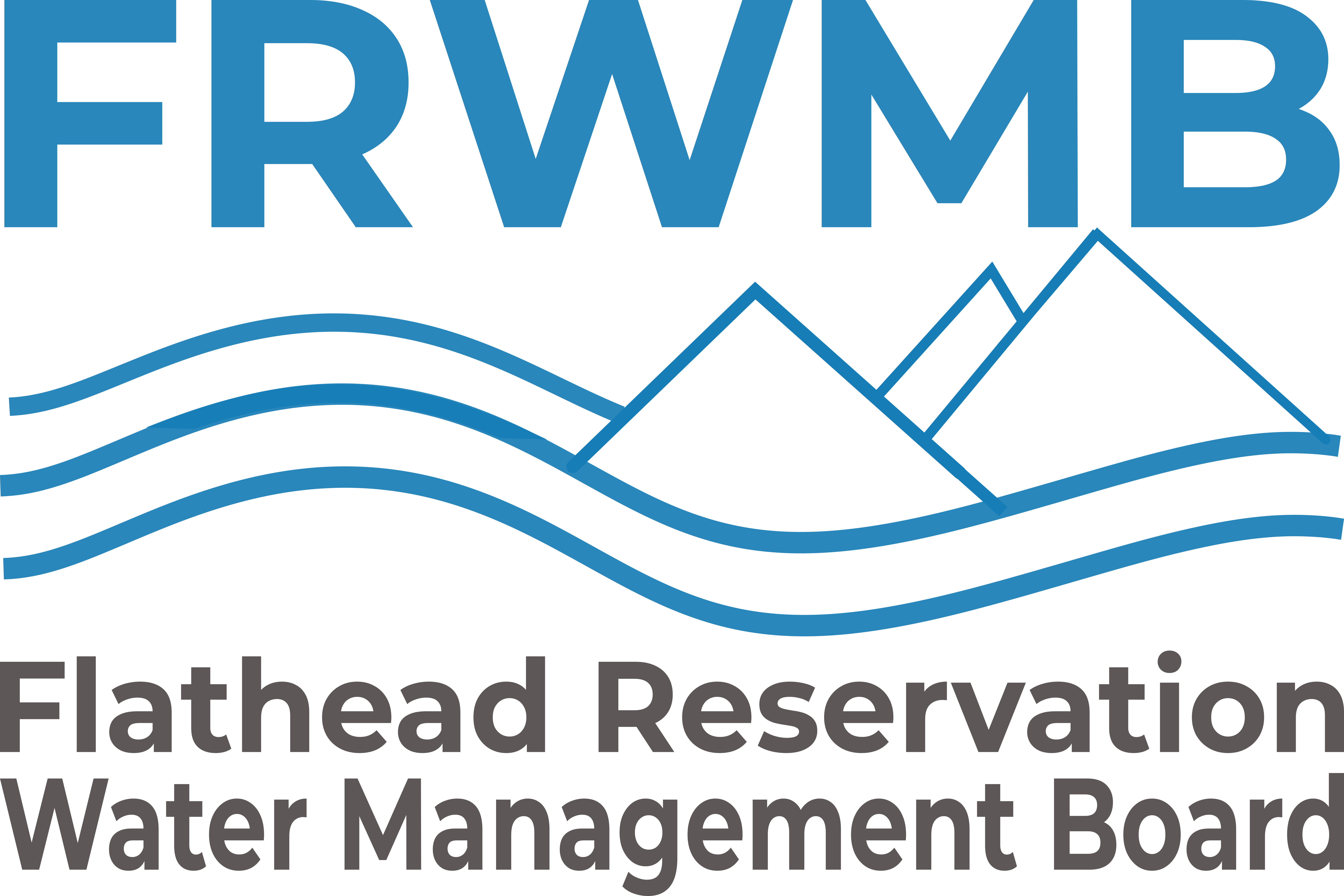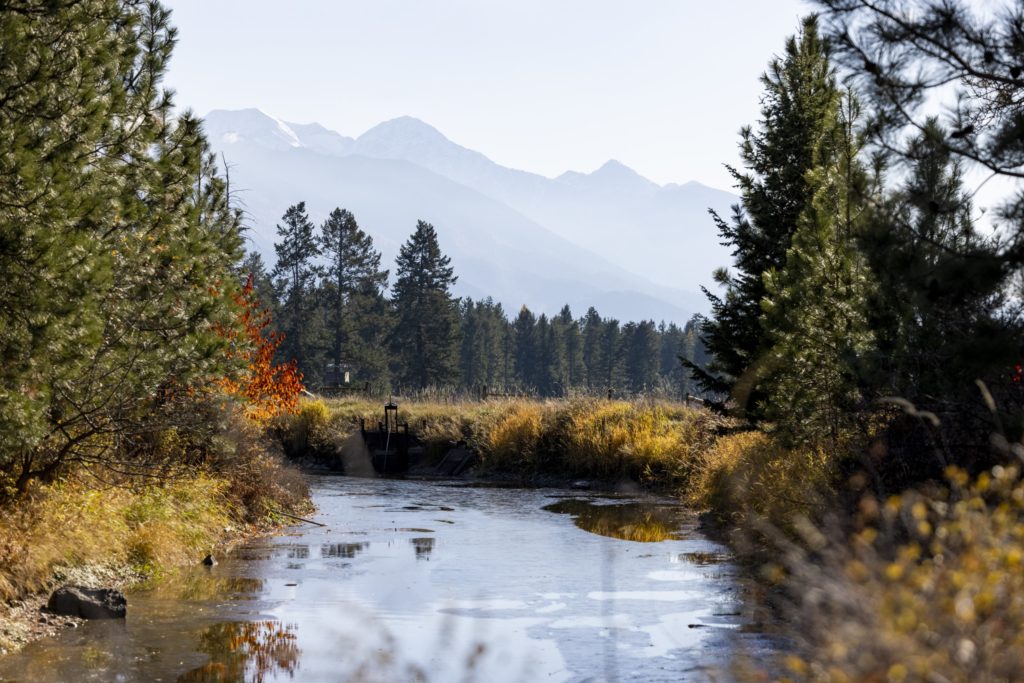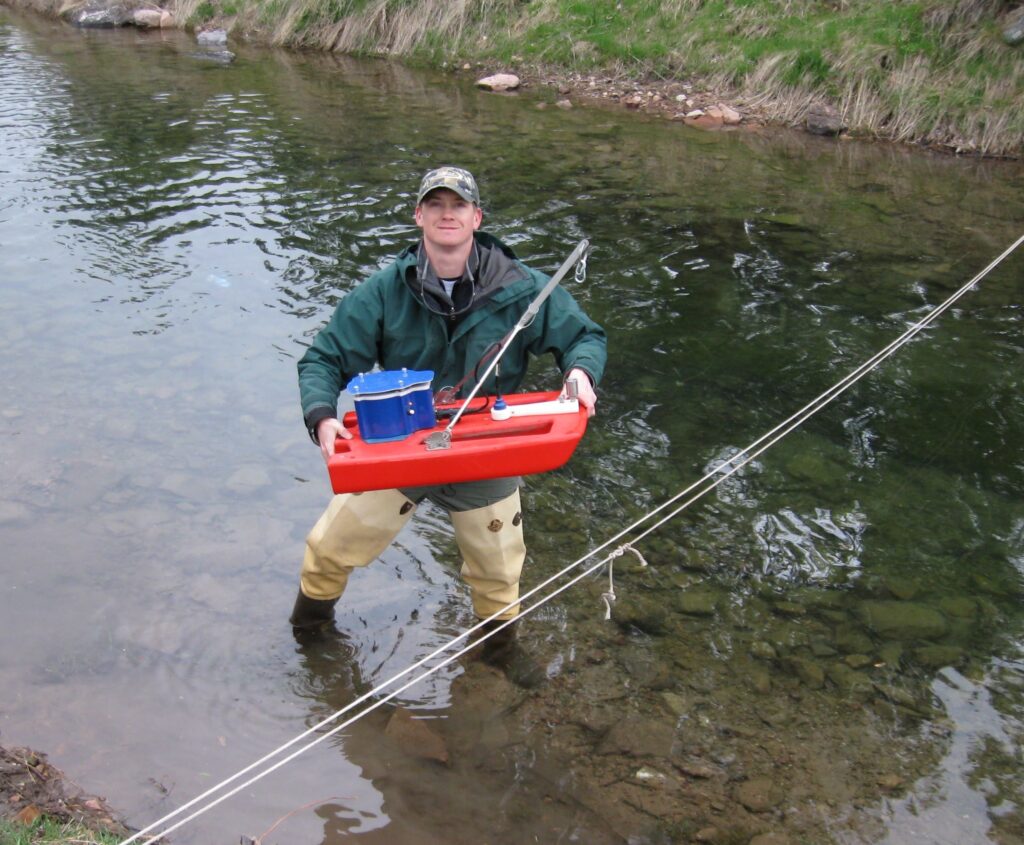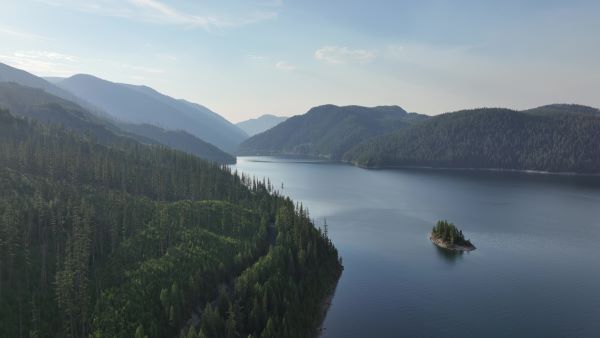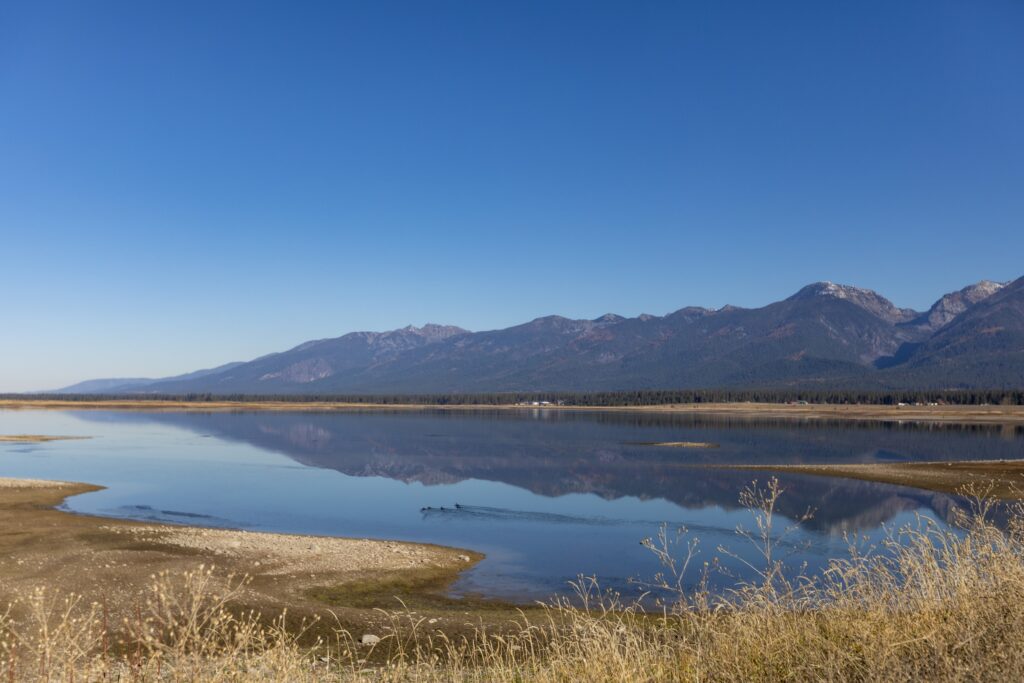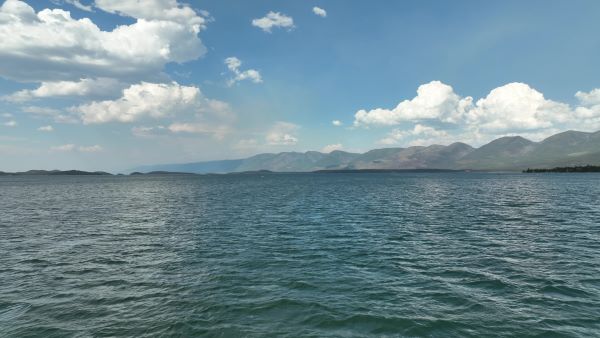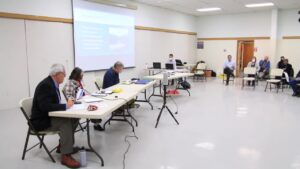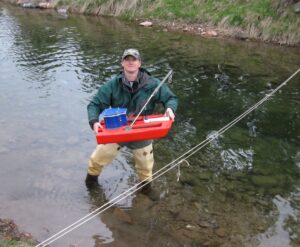*Ethan Mace was recently hired by the Flathead Reservation Water Management Board to head the Office of the Engineer, located on Main Street in Ronan. (Kristi Niemeyer/Lake County Leader)
Ethan Mace, the new water engineer for the Flathead Reservation Water Management Board, is settling into his new digs at the former Masonic Lodge in Ronan. While the Office of the Engineer is new, Mace’s involvement with the water compact that created his job and the board that directs him goes back nearly a decade.
As a hydrologist with the state Department of Natural Resources and Conservation, Mace had “an early seat” at the table when the Confederated Salish and Kootenai Tribes, the state and the federal government began negotiating water rights. His work gives him an in-depth understanding of the complexity of quantifying and adjudicating water rights, and the compact itself – a document that remains controversial in some circles.
“It’s all new territory,” he says, gesturing to the large meeting room where the board convenes, typically twice a month on Thursdays.
“I’m the first of my kind,” he adds, with a grin. “Fortunately, I like new, exciting adventures.”
During his 15-year career with the DNRC, Mace says he’s “worn a lot of different resource hats.” He earned a degree in aquatic wildlife biology and a master’s in resource conservation with an emphasis on aquatic ecosystems, both from the University of Montana. He’s worked as a fisheries biologist, an aquatic ecologist, a hydrologist and now as a water engineer.
His new position has long been considered key to “standing up” the Office of the Engineer – a critical component of the Montana Water Rights Protection Act (MWRPA).
His duties range from finding furniture and fixtures and moving a new desk into the upstairs room that will become his office, to training staff, overseeing the development of a new website, providing a budget, recruiting employees, assisting the public, and keeping the board well-informed on its complicated duty of administering water rights on the reservation.
“The beginning actually started a really long time ago,” says Mace – arguably as far back as 1855, when the Hellgate Treaty gave the Confederated Salish and Kootenai Tribes a senior claim to in-stream water rights on the Flathead Indian Reservation and potentially beyond its borders.
The compact, passed by the Montana Legislature in 2015 and the U.S. Congress in late 2020 as the MWRPA, created the framework for the six-member water board, which, since the effective date of Sept. 17, 2021, has exclusive regulatory authority for water rights administration on the Flathead Indian Reservation.
That includes issuing new water permits for domestic use (like drilling a new household well) and applications to change an existing use. Since first convening in January, the board has authorized the drilling of more than 220 domestic wells on the reservation.
The board, with assistance from the Office of the Engineer, must also make its way through a daunting backlog of nearly 3,000 registrations of existing uses, filed since the mid-1990s with the DNRC. Those applications were stalled when the state Supreme Court ruled that new water rights couldn’t be awarded on the reservation until the adjudication process was complete.
Some were also filed by water users during a 180-day filing period that ended last March.
Correcting a few misconceptions
The board learned recently from its legal counsel that it’s something called a “governmental instrumentality” – an organization created by statute to serve the public. In this case, the water board and Office of the Engineer are neither state nor tribal, but affiliated with both, and serve all property owners on the reservation, tribal and non-tribal.
The board does not, however, have anything to do with water delivered via the Flathead Indian Irrigation Project. Nor does it charge or collect fees for water use of any kind.
“The only money we collect in this office from reservation residents is application fees, which are a one-time fee that matches or mirrors the fee for the rest of the state,” says Mace.
In addition to those fees, the operations of the board and office are funded by matching appropriations from the state and Tribes. The composition of the board also reflects this goal of balanced representation: two members were appointed by the governor, two by the CSKT Tribal Council, and a fifth by the four other members. A sixth non-voting member represents the federal government.
Some reservation residents have asked if the office or the board will be metering wells.
“Nope,” says Mace. “We have neither the time nor the resources to do that.”
There are, however, a few limited situations where metering is required, such as subdivisions or larger new wells that could affect nearby water users. The office also has the authority to help resolve disputes among water users and measuring water usage could be a useful tool in those situations, Mace says.
Providing a legal pathway forward
Mace understands the confusion that’s been swirling for decades around reservation water rights.
“A lot of people don’t really know what their water rights are and I don’t blame them,” he says. “It’s complicated.”
But the compact, the water board and his office finally offer some certainty. “Since the mid 90s, any home built, any well drilled, any type of use has not had a legal pathway forward,” says Mace.
The compact creates a mechanism to deal with those uses that have been perched in limbo, and for any new uses, both tribal and non-tribal. Anyone who wants to drill a well and put water to use on the reservation must now first apply through the water office.
At this point, the office is only accepting applications for new domestic uses. But Mace expects the board will be ready to move forward in the new year on other appropriations, including those for subdivisions (in concert with the Department of Environmental Quality), as well as the backlog of state-based registrations for existing uses.
Meanwhile, he commends the technical assistance team for both the Tribes and the state for “working hard to keep pace and prioritize those who don’t have water first, then we can shift to folks who need resolution on water rights. That has been, I think, a smart and systematic approach.”
The Tribes have their own water rights office, with a staff dedicated to helping tribal members prepare the applications that will then come through the Office of the Engineer and the water board for approval.
“That’s a really big step for unified governance of water for it to be that way,” says Mace. Plus, he appreciates the help. “Otherwise it would just be us, helping everyone.”
Currently, his office is staffed with three full-time employees, including a compliance technician and a water conservation specialist, and is recruiting another conservation specialist to help move applications forward.
“I think we’re doing pretty good, although we also realize there’s real room for improvement,” Mace said. One priority is to launch a website and improve communications with the public.
“I just want folks to get an idea of what we’re trying to accomplish here, which is getting some work done and bringing some certainty to what’s been uncertain since the mid-90s, and we’re trying to do that in this unified fashion.”
Water board meetings are open to the public, in person or via Zoom. The Office of the Engineer is typically open 9 a.m.-5 p.m. Monday-Thursday at 401 Main St. in Ronan, although visitors are encouraged to call ahead for an appointment, 406-201-2532.
[Originally published by Lake County Leader on Dec. 8, 2022]
